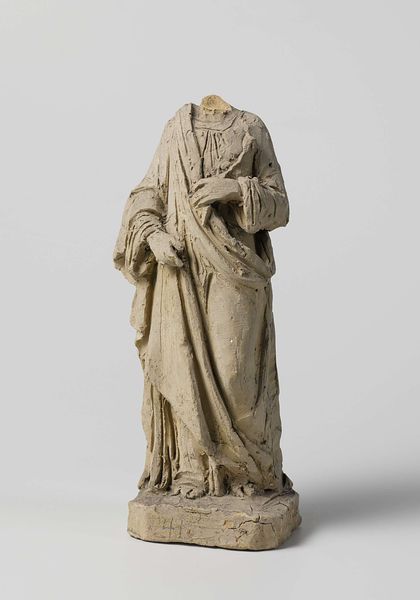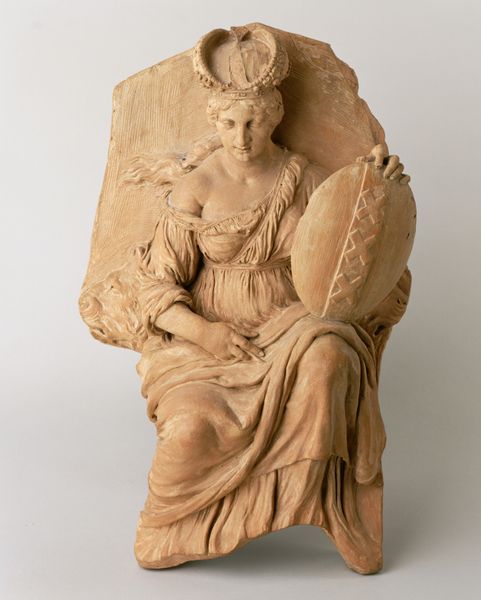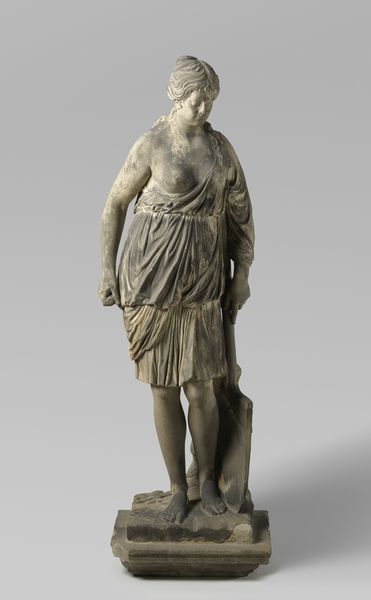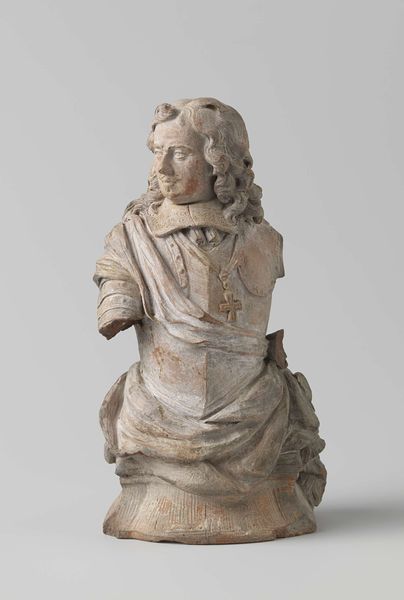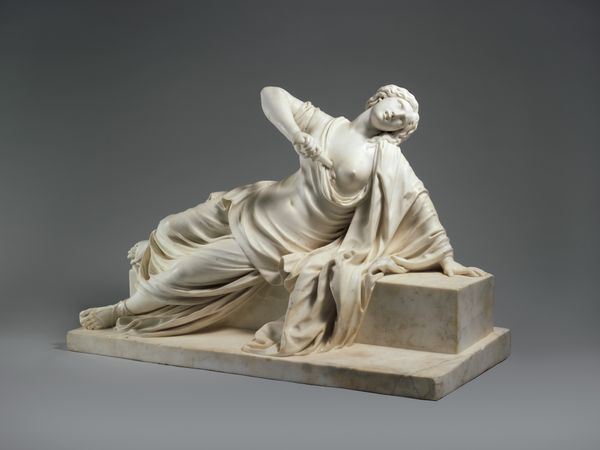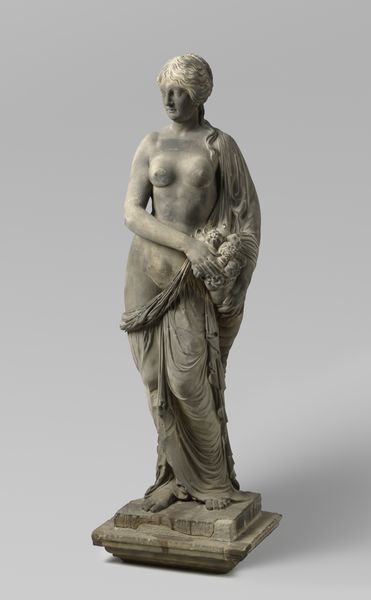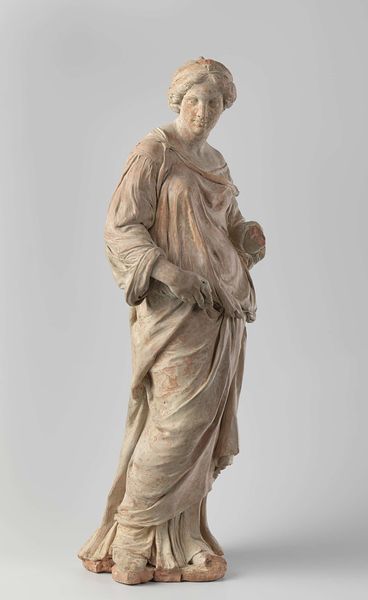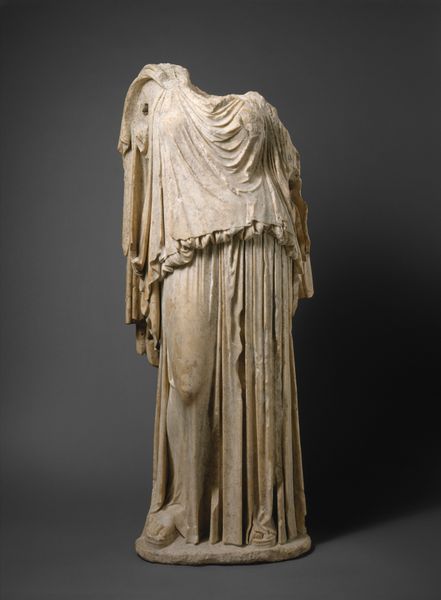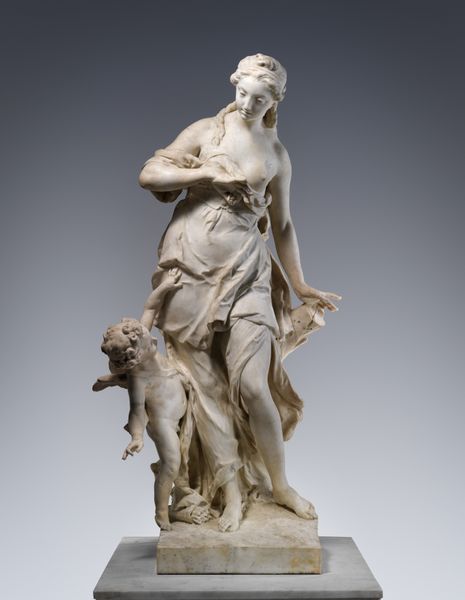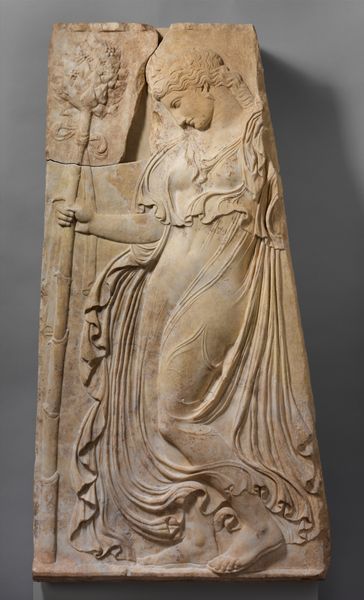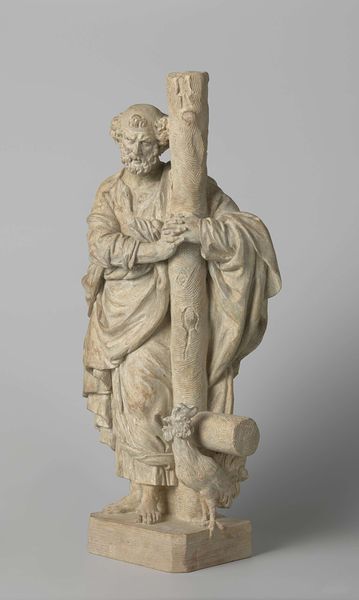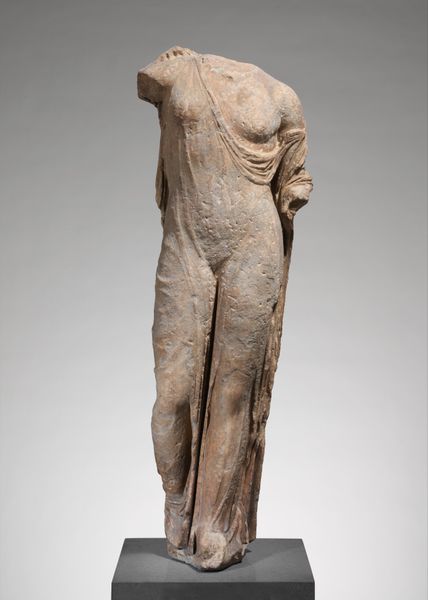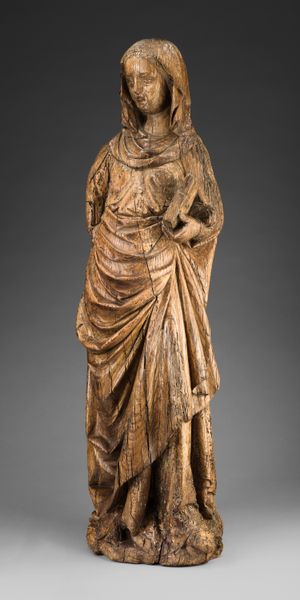
sculpture, marble
#
portrait
#
sculpture
#
greek-and-roman-art
#
classical-realism
#
figuration
#
roman-art
#
ancient-mediterranean
#
sculpture
#
marble
Dimensions: H. 51 1/2 in. (130.8 cm)
Copyright: Public Domain
Editor: This is a Roman marble sculpture from 99 BC, a “Draped Seated Man,” currently housed in the Met. It's fragmented, but I find the drapery so compelling—the way the marble falls and folds. What catches your eye when you look at this? Curator: Immediately, I'm struck by the interplay of volume and void. The sculptor masterfully used the inherent qualities of the marble to create a dynamic textile effect. Notice how the deep undercuts create stark shadows, giving the illusion of depth and movement within the drapery itself. Observe the composition's structure; it invites a study in contrasts between rigid support and soft texture. What compositional elements stand out for you? Editor: I noticed how the folds converge at certain points, drawing my attention. It almost feels deliberate. Do you think there's a kind of formal structure guiding where the lines and curves are placed? Curator: Absolutely. It’s not arbitrary. The sculptor probably followed the conventions of idealized representation, but you’re right—there is definitely a structuring. Look at the rhythm created by the repetition of these folds. It gives a sense of gravity but also this dynamic interplay, directing our eye through the form. Consider the tension held between static form and fluid surface... it is quite masterful. Editor: So the emotional power really comes from the composition, rather than any historical story that’s being depicted? Curator: Precisely. While historical context certainly informs our understanding, a formalist perspective prioritizes how the artwork's intrinsic qualities shape meaning. The textures, lines, balance…all exist independently and construct the experience. Editor: I’m starting to see the way the composition creates meaning of its own. Thanks for illuminating that for me. Curator: Indeed. By analyzing the formal components, we unveil layers of artistic intention beyond representation and reference.
Comments
No comments
Be the first to comment and join the conversation on the ultimate creative platform.
